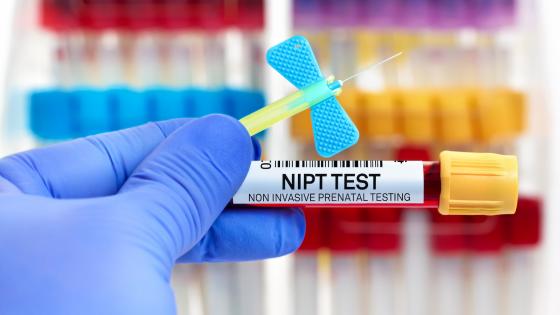Precision medicine has been widely heralded for its potential to transform both the practice of medicine and the economics of healthcare. Also known as personalised medicine, precision medicine targets treatments to patients based on their genetic, biological, or clinical characteristics. Examples include using biomarkers and genetic testing to personalise cancer treatment (Banerjee et al. 2020) and the possibility of recommending mammogram screening based on breast density rather than – or in addition to – age (Trentham-Dietz et al. 2016). The hope is that by identifying which patients are likely to benefit from certain treatments and – just as importantly – which patients are not, physicians can target effective treatments at the relevant sub-population, while sparing the rest the costs, side effects, and false hope of ineffective treatments (Aspinall and Hamermesh 2007, Armstrong 2012).
Precision medicine thus dangles the tantalising prospect of what has long been considered the holy grail of healthcare: improving patient health and wellbeing while simultaneously reducing healthcare spending (Cutler et al. 2019). But there’s a catch. Personalised medicine requires personalised information. And acquiring such information typically entails costs, such as the need for genetic testing. The result is substantial medical and policy debate over how finely to target the costly acquisition of information that could be used to personalise medicine.
We study this question (Conner et al. 2022) in the context of prenatal testing. Prenatal testing accounts for the largest share of genetic tests in the US (Phillips et al. 2018). It also involves additional ethnical concerns about the prospect of ‘designer babies’ and the potential eradication of certain traits in the population (Ball 2017, Devlin 2019, Hercher 2021).
For over half a century, invasive prenatal diagnostic tests – amniocentesis and chorionic villus sampling (CVS) – have been used to diagnose foetal chromosomal abnormalities. But the tests come with an elevated risk of miscarriage. Since the early 2000s, the development of a non-invasive prenatal screening technology – nuchal translucency (NT) – has offered a lower-cost way to assess the likelihood of the most common chromosomal abnormalities without any risk of miscarriage, and thus inform the decision of whether to undertake subsequent invasive testing.
We study the arrival of the second generation of non-invasive prenatal screening technologies – cell-free DNA screening (cfDNA), also known as non-invasive prenatal testing (NIPT). It was revolutionary in enabling analysis of foetal DNA without extracting foetal cells, and thus without creating any miscarriage risks. We study the original version of this cfDNA technology, which provided highly accurate information about the presence of the same three chromosomal abnormalities as the NT screening: Trisomy 21 (Down’s syndrome), Trisomy 13 (Patau’s syndrome), and Trisomy 18 (Edwards’ syndrome). However, like many new medical technologies, cfDNA screening is not only better – in this case, more informative – than its predecessor (NT screening) but is also much more expensive.
Whether and when to cover the (high) cost of this new screening technology is currently an active policy debate in the US and in many European countries (Minear et al. 2015, Gadsbøll et al. 2020, GenomeWeb 2020). For example, the US practice is to recommend that cfDNA screening be made available universally to all pregnant women (GenomeWeb 2020). In contrast, many European countries – including Sweden, the setting of our study – recommend initially offering everyone the cheaper, first-generation NT screening, and then covering cfDNA screening only for certain NT risk scores. In all cases, the recommending body recognises that cfDNA screening surpasses NT screening for predicting the likelihood of common chromosomal abnormalities. The typical European recommendation, however, also takes account of the significant cost difference between NT and cfDNA screening.
We empirically explore the costs and benefits of different policies toward this second-generation, cfDNA technology. We use detailed Swedish administrative data for pregnancies that received the first-generation screening between 2011 and 2019. This screen produces, for each pregnancy, a risk score that provides a predicted probability of foetal chromosomal abnormalities. This risk score is used by parents to make further decisions, and by the government to determine coverage for second-generation screening. The data include information about subsequent screening and invasive testing decisions, as well as birth outcomes.
We find that the introduction of coverage for cfDNA screening has enormous effects, both on increasing cfDNA screening and on reducing invasive testing for pregnancies that are covered for cfDNA screening. In turn, the reduction in invasive testing translates into fewer miscarriages.
Interestingly, however, we find little basis for the public discussion of the possible ‘end of Down’s syndrome’ due to the arrival of prenatal screening technology (Zhang 2020). This discussion is motivated by the oft-cited (and accurate) statistic that more than 95% of foetuses diagnosed with the condition are aborted (Conner et al. 2012, Zhang 2020). However, what the discussion misses is that parents who would not choose to terminate a pregnancy with chromosomal abnormality also avoid invasive testing because of its elevated risk of miscarriage. Indeed, we estimate that introducing covered cfDNA screening reduces the rate of live births with chromosomal abnormalities by 33% – a far cry from the 95% statistic – reflecting the choices of the sub-set of parents who prefer not to give birth to a child with a chromosomal abnormality.
Our results also shed light on the ongoing policy debate over how narrowly or broadly to cover cfDNA screening. They suggest that the US-style approach of relatively broad coverage would have the standard impact of most new medical technologies: improving patient wellbeing but also increasing healthcare costs. By contrast, the European approach of more targeted coverage for the new cfDNA screening technology has the potential to both improve patient wellbeing and lower healthcare costs. For example, we estimate that the policy in several of the regions of Sweden of only covering cfDNA for the pregnancies with very high risk scores would both increase patient welfare and reduce government health-care spending compared to the case where cfDNA is not available.
Taken together, our findings illustrate both the promise and perils of screening technologies designed to guide the application of other medical interventions. Appropriately targeted, screening can provide that holy grail of health care: improving patient well-being while saving money. However, if made more widely available, screening becomes the more typical form of medical technology, raising patient wellbeing as well as healthcare spending.
References
Armstrong, K (2012), “Genomics and Health Care Disparities: The Role of Statistical Discrimination”, JAMA 308 (19): 1979–1980.
Aspinall, M G and R G Hamermesh (2007), “Realizing the Promise of Personalized Medicine”, Harvard Business Review.
Ball, P (2017), “Designer babies: an ethical horror waiting to happen?”, The Guardian.
Banerjee, S, A Kumar, N Lopez, B Zhao, C-M Tang, M Yebra, H Yoon, J D Murphy and J K Sicklick (2020), “Cost-effectiveness Analysis of Genetic Testing and Tailored First-Line Therapy for Patients With Metastatic Gastrointestinal Stromal Tumors”, JAMA Network Open 3(9).
Conner, P, M Westgren, A Marsk, S Gustafsson and M Kublickas (2012), “Combined ultrasound and biochemistry for risk evaluation in the first trimester”, Acta Obstetricia et Gynecologica Scandinavica 91 (1): 34–38.
Conner, P, L Einav, A Finkelstein, P Persson and H Wiliams (2022), “Targeting Precision Medicine: Evidence from Prenatal Screening”, NBER Working Paper No. 30669.
Cutler, D, T E Getzen and M Catillon (2019), “Two hundred years of health and medical care”, VoxEU.org, 9 February.
Devlin, H (2019), “IVF couples could be able to choose the ‘smartest’ embryo”, The Guardian.
Gadsbøll, K, O B Petersen, V Gatinois, H Strange, B Jacobsson, R Wapner, J R Vermeesch, the NIPT-map Study Group and Ida Vogel (2020), “Current use of noninvasive prenatal testing in Europe, Australia and the USA: A graphical presentation”, Acta Obstetricia et Gynecologica Scandinavica 99 (6): 722–730.
GenomeWeb (2020), “ACOG Guidelines Recommend NIPT for All Pregnancies Regardless of Risk”, accessed 19 July 2021.
Hercher, L (2021), “A New Era of Designer Babies May Be Based on Overhyped Science”, Scientific American.
Minear, M A, C Lewis, S Pradhan and S Chandrasekharan (2015), “Global perspectives on clinical adoption of NIPT”, Prenatal Diagnosis 35 (10): 959– 967.
Trentham-Dietz, A, K Kerlikowske, N K Stout, D L Miglioretti, C B Schechter, Mehmet Ali Ergun, J J van den Broek et al. (2016), “Tailoring Breast Cancer Screening Intervals by Breast Density and Risk for Women Aged 50 Years or Older: Collaborative Modeling of Screening Outcomes”, Annals of Internal Medicine 165 (10): 700–712.
Zhang, S (2020), “The Last Children of Down Syndrome”, The Atlantic, December.







